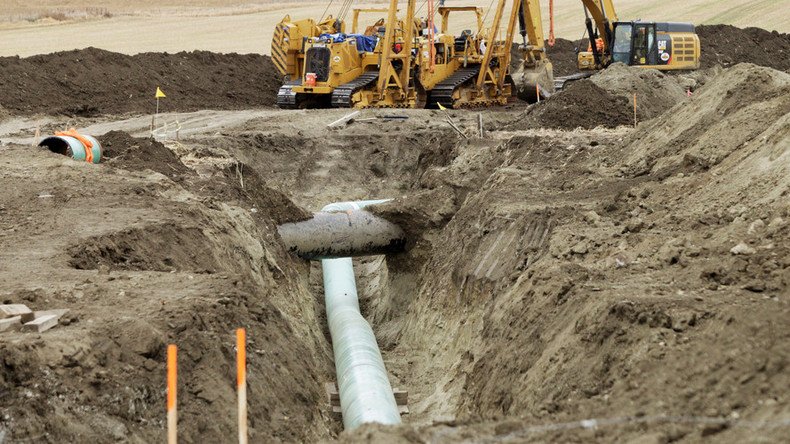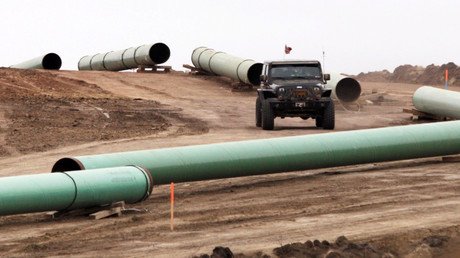Dakota Access pipeline suffers oil leak even before becoming operational

The Dakota Access pipeline already had its first leak – 84 gallons of oil – at a pump station in South Dakota in early April, sparking outrage and calling into question its environmental safety.
The long-debated pipeline leaked crude oil on April 4 in Tulare Township in Spink County, according to the South Dakota Department of Environmental and Natural Resources. Reports of the incident emerged just several days before the pipeline becomes fully operational.
The report of the spill can be found on the Department of Environmental and Natural Resources website. The agency apparently did not make any official announcement on the incident as it was relatively minor and had no environmental impact, according to Brian Walsh, a scientist with the department, as cited by the Guardian. The site “was cleaned up right away," the official added as quoted by ABC news.
The spill occurred less than 110 miles from Lake Oahe, which supplies Sioux tribes with water.
The Standing Rock Sioux Tribe, which protested the planned pipeline and warned of potential threats to drinking water supplies and the environment, condemned the incident.
“The Dakota Access pipeline has not yet started shipping the proposed half million barrels of oil per day and we are already seeing confirmed reports of oil spills from the pipeline. This is what we have said all along: oil pipelines leak and spill,” Standing Rock Sioux Tribe Chairman Dave Archambault II said in a statement.
He added that apart from the tribe’s resources, there are “17 million people whose drinking water is at risk.” He also hopes that the ongoing lawsuit against the project will prevent further accidents.
The multi-billion dollar Dakota Access pipeline (DAPL) project, designed to transport oil from North Dakota to Illinois, has sparked protests across the US.
The most violent clashes erupted between police and protesters in a makeshift camp that was set up north of the Standing Rock Sioux Reservation. In February, the protesters refused to leave the site even after receiving an eviction notice, setting their tents on fire. The DAPL protesters and police became engaged in a violent stand-off, and at least 47 were arrested, as dozens of policemen in full gear were deployed to clear the area.
The Native American tribes attempted to shut down construction of the pipeline and filed a lawsuit against it. The construction was suspended during the Obama administration, but came back into force shorty after Donald Trump took office. It is set to begin operating soon despite public discontent.














